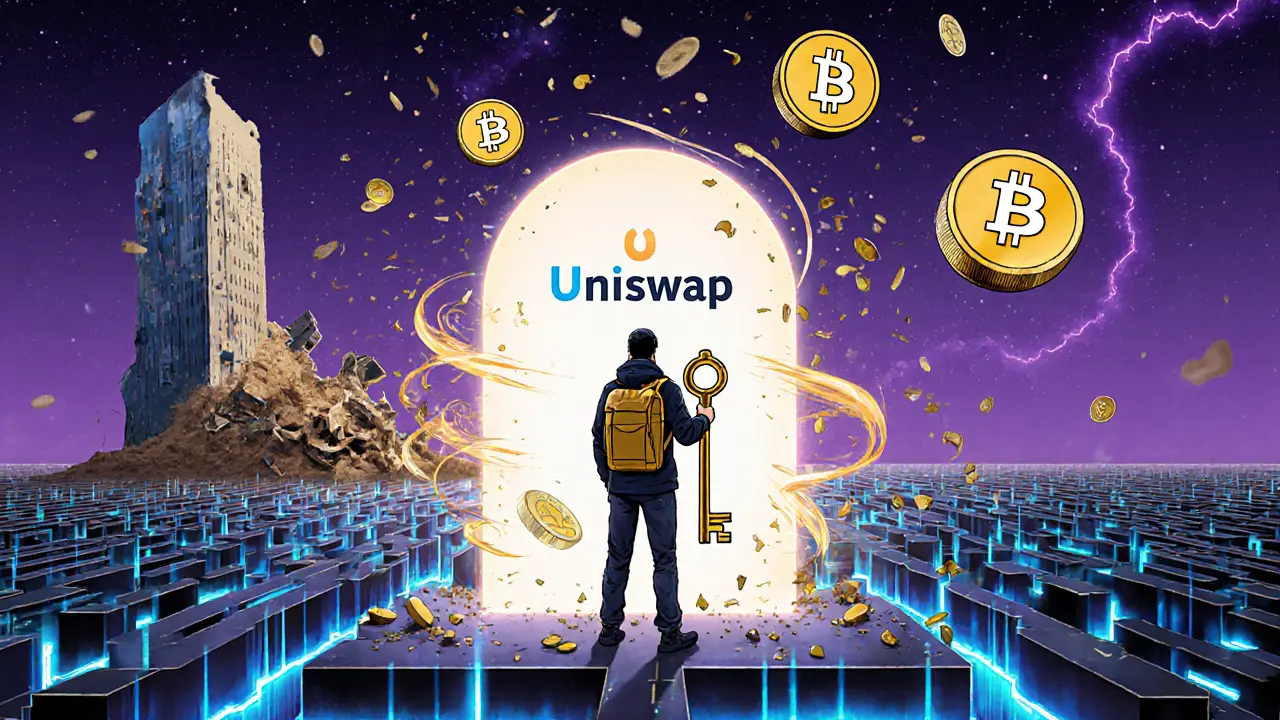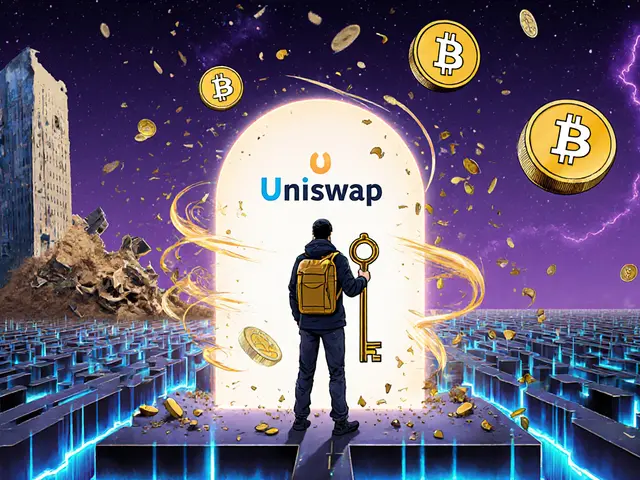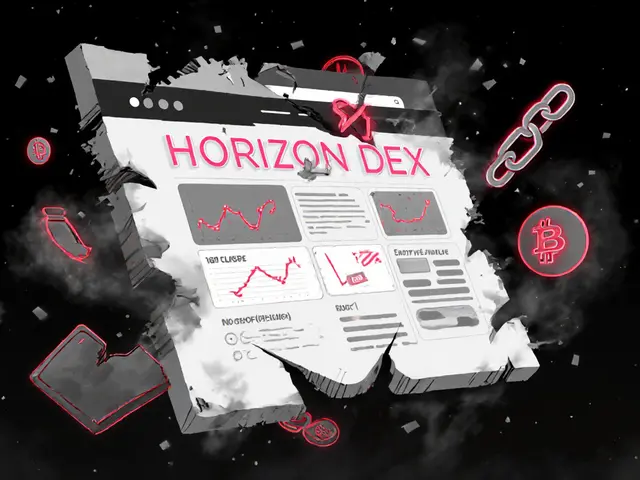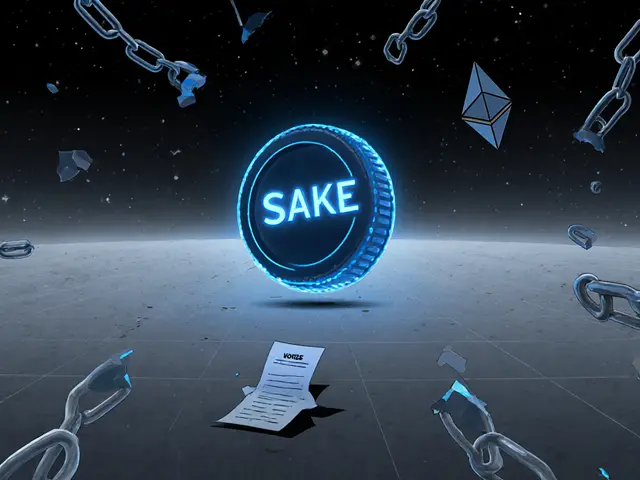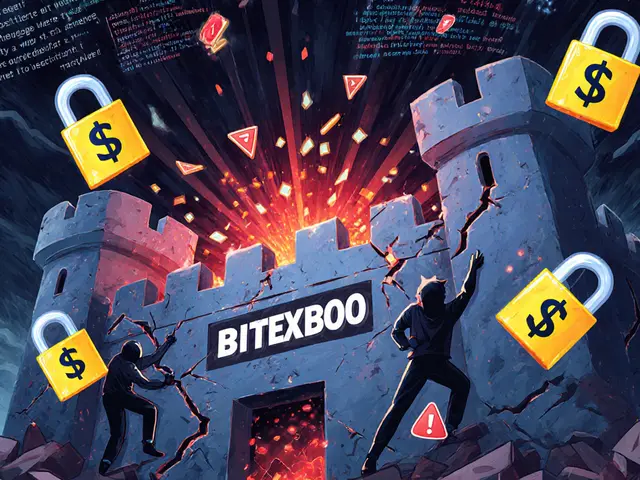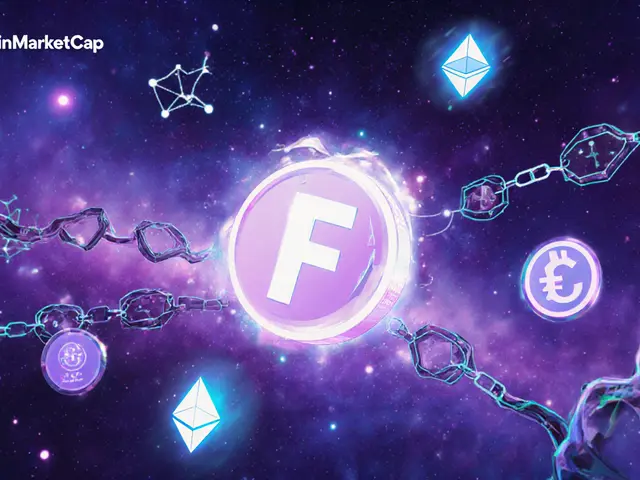Gas Fee Calculator
Estimate Your Transaction Cost
Calculate gas fees for your DEX transactions on different networks. This helps avoid failed trades due to insufficient gas.
For transactions under $100, always use Layer 2 networks like Arbitrum or Optimism. You'll save 90% on gas fees compared to Ethereum Mainnet.
Using a decentralized exchange (DEX) feels intimidating the first time. You’re not clicking a button to buy Bitcoin with your credit card. You’re not handing your coins to a company that promises to keep them safe. You’re directly interacting with code on a blockchain - and that’s exactly the point. DEXs let you trade crypto without giving up control of your keys. No middleman. No account freeze. No KYC forms. But if you’ve ever seen a failed transaction with a $4 gas fee and no trade, you know it’s not plug-and-play. This guide cuts through the noise. You’ll learn how to actually use a DEX - from wallet setup to final swap - without the jargon, without the fluff.
What Is a Decentralized Exchange?
A decentralized exchange, or DEX, is a platform where you trade cryptocurrencies directly from your own wallet. Unlike centralized exchanges like Coinbase or Binance, DEXs don’t hold your money. Instead, they use smart contracts - self-executing code on blockchains like Ethereum, BNB Chain, or Solana - to match trades automatically. The most common type uses something called an Automated Market Maker (AMM). Instead of buyers and sellers lining up, liquidity pools hold pairs of tokens (like ETH/USDC), and algorithms adjust prices based on supply and demand. Uniswap, launched in 2018, was the first to make this simple enough for regular users. Today, it handles over 60% of all DEX trading volume.Why Use a DEX Instead of a Centralized Exchange?
The biggest reason is control. On a centralized exchange, you’re trusting a company to safeguard your assets. If they get hacked, get shut down by regulators, or just make a mistake - your funds are at risk. In 2023, over $2 billion was lost in CEX hacks. On a DEX, your private keys stay in your wallet. No one else can touch them. You also get access to new tokens the moment they launch - something centralized exchanges often delay or block. And there’s no identity verification. If you live in a country with strict crypto rules, DEXs can be your only option. But there are trade-offs. DEXs don’t let you buy crypto with a bank card. You need to already own some crypto to start. Gas fees on Ethereum can spike to $50 during busy times. And if you set your slippage too low, your trade fails. You won’t find customer support if something goes wrong. You’re on your own.What You Need Before You Start
You need three things: a Web3 wallet, some native blockchain tokens for gas, and a DEX website.- Wallet: MetaMask is the most popular. It works in your browser and mobile app. Coinbase Wallet and Trust Wallet are solid alternatives. Install one, create a new wallet, and back up your 12-word recovery phrase - write it down on paper, never digitally.
- Gas tokens: If you’re using Ethereum, you need ETH. For BNB Chain, you need BNB. For Solana, you need SOL. You need at least 0.01 ETH (around $25) to cover multiple transactions. Without it, your trade won’t go through. You can buy ETH on a centralized exchange and send it to your wallet.
- DEX website: Uniswap (uniswap.org) is the go-to for Ethereum. PancakeSwap (pancakeswap.finance) works on BNB Chain. Raydium (raydium.io) is popular on Solana. Bookmark the real site - fake ones are everywhere.
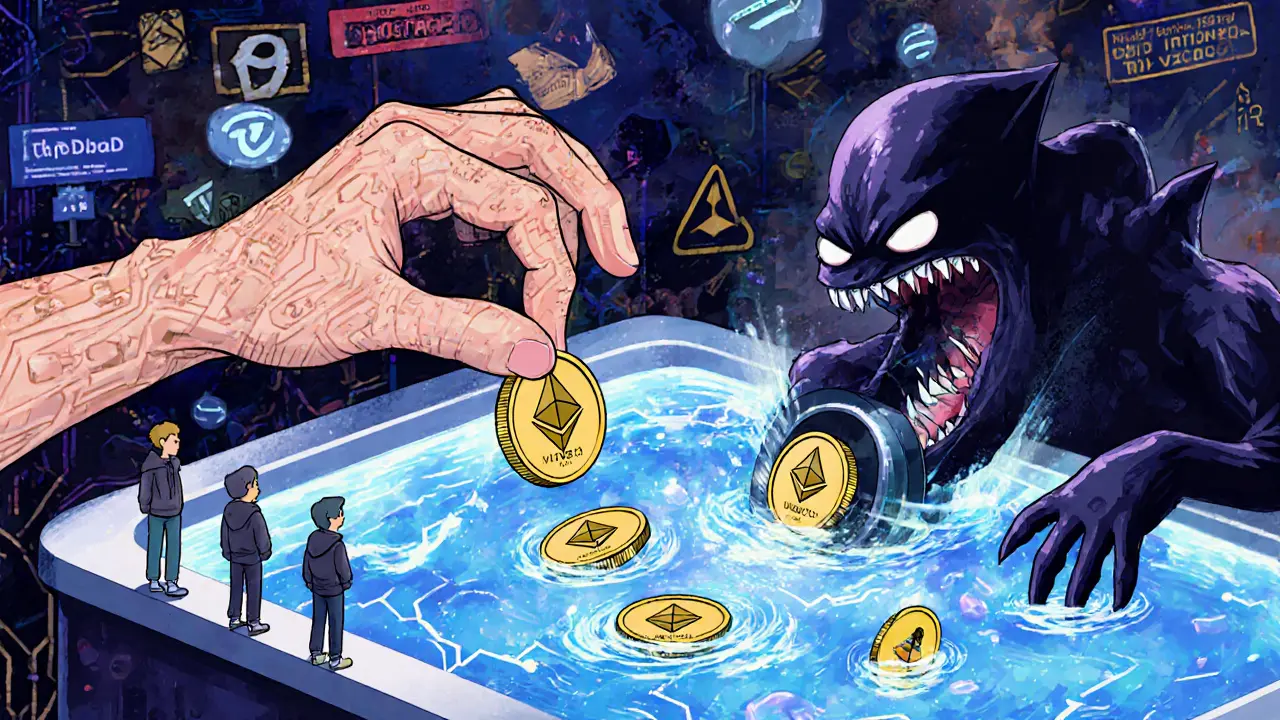
Step-by-Step: How to Swap Tokens on a DEX
Here’s how to trade ETH for USDC on Uniswap - the most common first trade.- Install and fund your wallet. Download MetaMask, create a wallet, and send 0.01 ETH from a centralized exchange like Coinbase. Wait for the deposit to confirm.
- Go to Uniswap.org. Make sure the URL is correct. No typos. No shortened links.
- Connect your wallet. Click ‘Connect Wallet’ in the top right. Select MetaMask. Confirm the connection in your wallet app.
- Select your tokens. In the ‘From’ field, pick ETH. In the ‘To’ field, type USDC. It should auto-populate. Don’t pick random tokens - stick to well-known ones like USDC, DAI, or WETH.
- Enter the amount. Type how much ETH you want to swap. Say, 0.5 ETH. The interface will show you how much USDC you’ll get.
- Set slippage tolerance. Click the settings icon (gear). Set slippage to 1% for stable pairs like ETH/USDC. For new tokens, go to 3%. Slippage is the max price change you’ll accept. Too low? Your trade fails. Too high? You get ripped off.
- Approve the token. Click ‘Swap’. You’ll see a pop-up asking you to approve Uniswap to spend your ETH. Click ‘Confirm’ in MetaMask. This costs gas - usually $1-$3. Wait for it to confirm.
- Execute the swap. After approval, click ‘Swap’ again. MetaMask will pop up with the final details. Check the amount, the price, and the gas fee. If it looks right, click ‘Confirm’.
- Wait for confirmation. On Ethereum, this takes 15-30 seconds. On Arbitrum or Optimism (Layer 2s), it’s under 5 seconds and costs pennies. Once confirmed, your USDC appears in your wallet.
Common Mistakes and How to Avoid Them
Most people fail their first DEX trade. Here’s why - and how to fix it.- ‘Insufficient gas’ error: You didn’t have enough ETH to pay for the transaction. Always keep at least 0.01 ETH in your wallet. Even if you’re swapping $10 worth of tokens, you still need gas.
- ‘Slippage tolerance exceeded’: The price moved too much between when you clicked ‘Swap’ and when it executed. Increase slippage to 2-3% for volatile tokens. For ETH/USDC, 1% is fine.
- Wrong token address: Scammers create fake tokens with names like ‘USDC’ but different addresses. Always check the contract address on CoinGecko or CoinMarketCap before swapping. If it’s not the official one, don’t proceed.
- Approving the wrong token: Some DEXs ask you to approve a token before swapping. Never approve a token you don’t understand. If you see ‘Approve 1000000000000000000000000000 USDC’, something’s wrong. Cancel it.
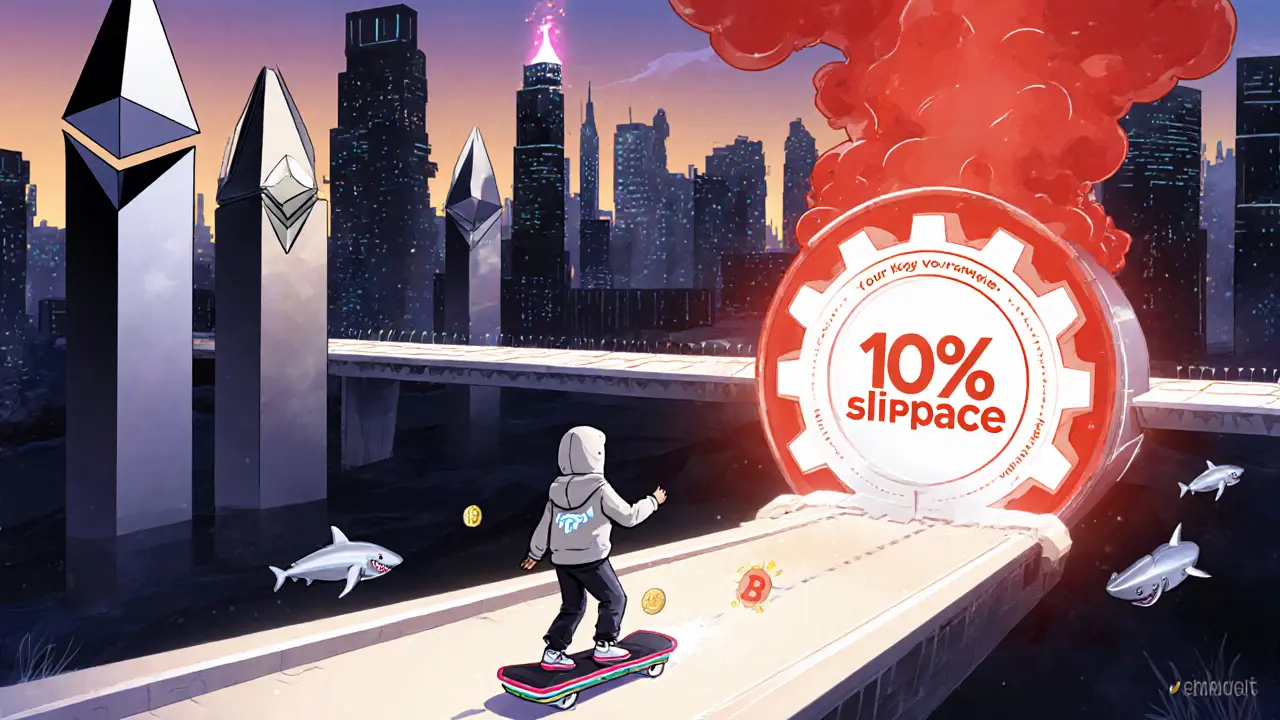
Layer 2s Are the Future - Use Them
Ethereum’s mainnet is expensive. But Layer 2 networks like Arbitrum, Optimism, and Polygon are not. They’re built on top of Ethereum but cut gas fees by 90%. Uniswap V4, launching in late 2024, will make Layer 2s even smoother. If you’re doing small trades under $100, always use a Layer 2. Connect your MetaMask to Arbitrum, then go to Uniswap on Arbitrum. Your $25 swap will cost $0.10 instead of $4.What About Liquidity Pools and Impermanent Loss?
You don’t need to provide liquidity to use a DEX. But if you want to earn fees by adding your tokens to a pool, you need to know about impermanent loss. It’s when the price of your two tokens changes after you deposit them. Say you add 1 ETH and 3,000 USDC to a pool. If ETH doubles in price, you’ll end up with less value than if you’d just held the tokens. Studies show 68% of liquidity providers underestimate this risk. Only add money you’re okay losing. Start small. Stick to stable pairs like USDC/DAI.Final Thoughts: Is a DEX Right for You?
If you’re comfortable with tech, value privacy, and want full control over your crypto - yes. DEXs are the future of trading. They’re faster, cheaper on Layer 2s, and more secure than centralized platforms. But if you’re new, want to buy crypto with a credit card, or hate learning new systems - stick with Coinbase or Kraken for now.Start small. Swap $10. See how it feels. Use Arbitrum. Set slippage to 1%. Double-check token addresses. Once you’ve done it once, it becomes second nature. The first time is the hardest. After that, you’re not just trading crypto - you’re participating in a new kind of financial system.
Can I use a DEX without a wallet?
No. All DEXs require a Web3 wallet like MetaMask or Trust Wallet. These wallets hold your private keys and sign transactions. You cannot trade on a DEX using just a browser or email login.
Are DEXs safe?
They’re safer than centralized exchanges because you control your funds. But they’re not risk-free. Smart contracts can have bugs. Scammers create fake tokens and phishing sites. Always verify contract addresses, never click random links, and never share your seed phrase. The protocol is secure - the user is the weakest link.
Why is my transaction taking so long?
On Ethereum mainnet, delays happen during high network congestion - like when a new token launches or NFT drops. Gas fees spike, and miners prioritize higher-paying transactions. Use Layer 2 networks like Arbitrum or Optimism for faster, cheaper trades. You’ll get confirmation in seconds, not minutes.
What’s the difference between slippage and gas fee?
Gas fee is the cost to process your transaction on the blockchain - paid in ETH, BNB, or SOL. Slippage is the maximum price change you’ll accept on your trade. If ETH/USDC moves 2% while your trade is pending, and your slippage is set to 1%, the trade fails. Gas is the cost of doing business. Slippage protects you from bad prices.
Can I trade any crypto on a DEX?
You can trade any token that has a liquidity pool on the DEX. Uniswap supports over 386,000 tokens, but most are low-liquidity scams. Stick to tokens listed on CoinGecko or CoinMarketCap. If no one’s trading it, you won’t be able to buy or sell it easily.
Do DEXs have customer support?
No. DEXs are protocols, not companies. There’s no phone number, no chatbot, no email support. If your transaction fails, you can’t call someone to fix it. You have to troubleshoot yourself - check your gas, slippage, and token addresses. Community forums like Reddit or Discord can help, but no one can reverse your transaction.
Next time you want to trade, skip the centralized exchange. Try a DEX on Arbitrum with $10. Set your slippage to 1%. Confirm the token address. Execute the swap. If it works - you’ve just taken control of your crypto. That’s the real win.
